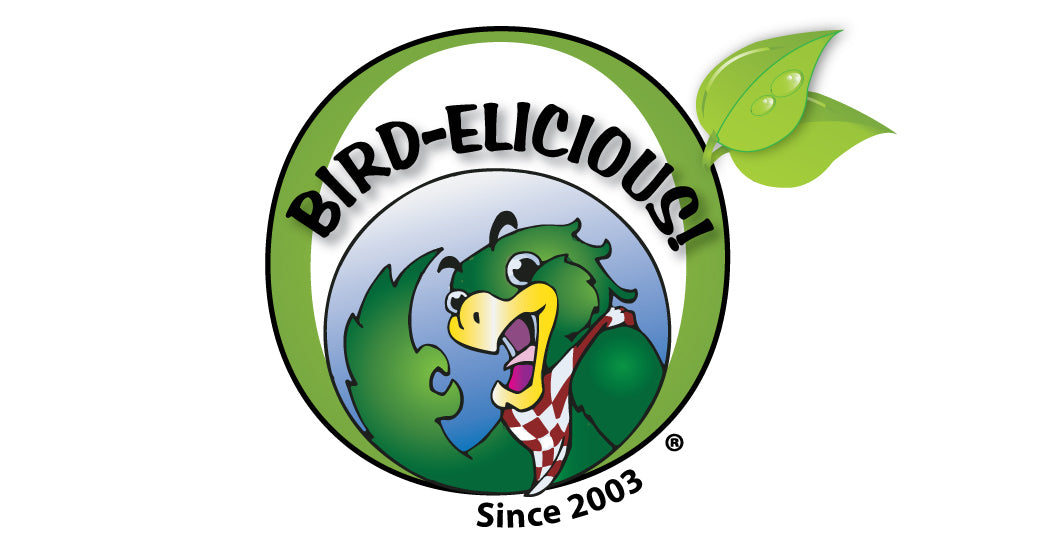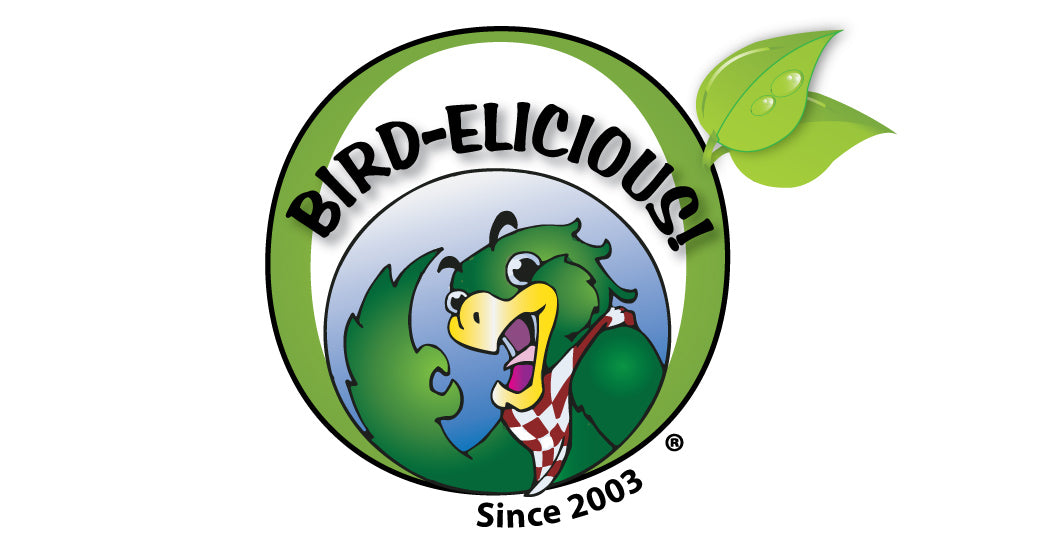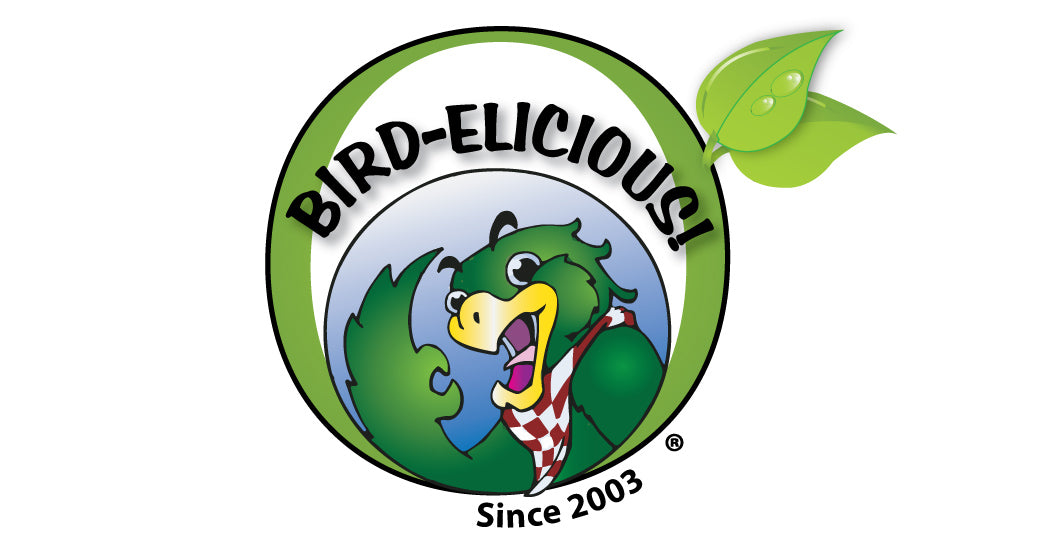Long before our bird gets to the point where it is lethargic, about to fall of its perch or at the bottom of its cage we need to recognize the early signs of illness. Unfortunately many of us, especially new bird caregivers have not been schooled regarding the early signs of illness. It is my desire to help all of us learn or refresh even veteran bird-lovers of the early signs of illness in birds we may have forgotten.
In the next few series of “Is My Bird Sick” I hope to cover some of the many signs our birds give us in the way of physical signs as well as emotional and behavioral signs we can pick up on if we will be sure to keep a close relationship with our birds.
Droppings are one of the quickest ways to tell if our birds are getting sick, but they may not be the most reliable. If there is a strong hormonal odor our bird may be on the brink of prolapse. In that case we need to be checking for straining when our bird performs its droppings. Or is there a constant dripping coming for the cloaca? The uropygial gland (preening gland) may be clogged, this is usually due to a lack of healthy dietary fat in the diet or a buildup of dust if our bird is of the “dusty” species, or it could be a tumor at the location of the gland. There are many other ways to uncover the mystery of illness in our birds such as feather discoloration ranging from black spots or simply the lack of color like a bleaching out of color. Skin can tell us a lot too such as dry skin, pink or red skin, blemished skin from parasite bites or small wounds that don’t heal due to a lack of nutrients. Eyes may not be bright and alert, but we will only know this if we pay close attention to our bird’s eyes on a very frequent and regular basis. What about breathing? Does our bird sound stuffed up? Does our bird sneeze or wheeze? These signs and more will give us clues as to potential problems that may be setting in.
Droppings | Poop
Let’s first address bird poop. This is a topic that has been discussed to the point of diarrhea, but it deserves our attention nonetheless.
There are some hard and fast rules about how our birds’ droppings should look, but let’s first talk about the fact that poop can arrive at the bottom of the cage or drop on the floor in all forms, shapes, sizes and colors!
Depending on what we feed our birds droppings can range in color from a pale, light cardboard color to light green to dark green, to brown to purple to even appearing black! Consistency can range from almost solid to watery splat as well, all depending on what we feed. With all of the varieties of droppings, clearly you can see that diagnosing your bird’s poop and using your bird’s poop as the only method of determining wellness versus illness could pose a bit of a problem.
You may not be very surprised to learn that I don’t follow the normal thinking regarding the consistency of droppings; I don’t believe they should be super well-formed. In other words I don’t believe they should be solidly formed like long, tubular worms with little to no urine present. Why do I believe this? Let’s go back a few decades to just before pellets were introduced. Prior to pellets most caregivers were feeding either a strict vegetarian diet consisting of chopped up vegetables or a strictly seed diet. Or, if they were really knowledgeable they were feeding a combination of both. Unfortunately all versions of these diets were still not correct for the Psittacine’s digestive tract, but more on that later. – At any rate the droppings of birds fed any version of these diets would be much looser droppings having three parts, the feces (solid part), the urine (the watery part) and the urates (the white part which is the burn off of protein not used by the body).
For those of us who desire to see solid droppings excreted from our birds with little to no urine and only some amount of urates to none at all, we are actually wanting a totally homogenized excretion which would only be available if we are feeding a totally homogenized highly processed dry food such as pellets. OR, a very high fiber food that has a lot of cooked ingredients added to it to soak up the moisture from any fresh food we may be adding. Neither of these diets are healthy for a parrot’s digestive tract. Think about this; in the wild they would be consuming fresh, high moisture foods that moisturize and lubricate their digestive tracts as the food passes through. Instead, with dry kibble or foods that have the moisture cooked out any moisture in their digestive tract is soaked up by the food as it passes through the digestive tract causing the intestinal mucosa to become dry. This leaves the mucosa very vulnerable and easy to rip and tear or to be scraped away exposing the wall of the digestive tract. Once the wall of the digestive tract is exposed it can be easily torn and any bad bacteria or fungus that may be present in the digestive tract can now enter the bloodstream and potentially cause a systemic illness throughout the body. *The bullet point here is that the digestive tract is supposed to soak moisture out of the food; the food is NOT supposed to soak moisture out of the digestive tract. While it is true that the digestive tract releases digestive acids in order for food to be broken down, food is not supposed to deplete the digestive tract of its intrinsic moisture level. Do you see where we have had this incorrect for decades? Do you see why birds constantly hop over to their water bowls to drink more and more water and to soak their food? They intrinsically know their digestive tract is being leached of moisture with the foods we have been feeding!
My take away point regarding droppings is this; we do not want to see well-formed droppings. Instead we actually want to see droppings that are somewhat moist or loose and watery around the edges. The caveat is this, as long as we are not causing polyuria due to an abnormally high protein level in the diet creating proteinuria moderately high levels of urine in the droppings is actually a good sign of hydration in the digestive tract. If true polyuria is present due to excessive protein in the diet we would be placing an undue strain on the kidneys possibly inducing kidney disease and/or gout. Dietary protein levels are slightly different for each species and can even vary for each individual bird depending on the health of each bird. Therefore I will not give ranges of dietary protein levels, especially when the ranges for dietary protein levels constantly change based on the ever-changing influx of research information. In addition, exotic birds do not extract protein from their food in the same manner as mammals. Birds are not mammals; they are a special class of aves. Instead they derive their protein from foods as “true protein” not as nitrogen burned off the protein they consume. This is why the guaranteed analysis on the labels we read on packaging really do not do us, as caregivers of exotic birds a whole lot of good. “Crude Protein” levels as stated on labeling is based on burned off nitrogen for the benefit of mammalian nutrition and those animals who have a cecum, not “true protein” for the benefit of exotic avian nutrition who do not have a cecum.
It is for this very reason we here at Origins Wild Diet™ decided to produce our ready-to-feed morsels in an almost semi-moist state! In order to accomplish the task of shipping to our customers we had to create a food that was dry enough to package and ship, but moist enough that the food didn’t extract moisture from the digestive tract of the birds who consume it. We recognized long ago that parrots in the wild only consumed fresh, moist foods; they don’t cook in the wild! There are no dry-pellet trees in the wild! Gentle dehydration is one of the oldest and most reliable forms of food preservation known to humankind. As long as the food is dehydrated at low temperatures, 115 degrees or less the only “nutrient” removed is the moisture. Using the gentle dehydration process we use in the production of our foods we can ensure that not all of the moisture is removed, but enough to keep the food from spoiling or fermenting because we know at just what stage to stop the dehydration process. Once we stop that process the delicate digestive enzymes remain intact, the fatty acids (Omegas), the amino acids (proteins), the essential monosaccharides (carbohydrates/fiber), the vitamins, and the minerals all remain active and viable. What happens to the droppings when parrots consume this kind of food? If you are feeding nothing but Origins Wild Diet™ you will probably see droppings that are somewhere between semi-solid to partially watery with all three parts, the feces, urates and urine. If you are feeding fresh foods along with our foods, and should be feeding fresh foods along with OWD™, then your bird’s droppings should be even more watery! This should give you absolutely no cause for concern. If you are not feeding our foods at all and you are feeding a totally fresh diet with no cooked foods added and no dry grains or flours or commercial snacks then your bird’s droppings are probably very watery. This is fine, no cause for alarm.
Again, I reiterate, we do NOT want to see super well-formed droppings coming from our birds! In my opinion this indicates that the food we are feeding is way, way too dry! Dry foods are those such as highly processed kibble and/or cooked grains and legumes that soak up the moisture of our birds’ digestive tracts. And BULKY foods cause overly-formed droppings too. Bulky foods would consist of foods containing too much “cellulose” such as foods like botanically classified vegetables such as mature broccoli, cauliflower, kale, cabbage, bok choy, brussels sprouts, carrots and more. You can perform a search on the Internet under “botanically classified vegetables” to find a list of vegetables that contain cellulose.
What is so bad about overly-formed, bulky droppings beside the fact they may be too dry thus causing our birds’ mucosal lining and digestive tracts to dry out? Large, bulky, overly-formed droppings can potentially leach the nutrients out of the digestive tract as this dry, bulky fiber passes through the digestive tract. Moist food doesn’t do that. When nutrients are leached out our birds begin the stages of “failure to thrive” eventually leading to malnutrition over a long period of time. Until our birds begin to show outward signs like feather discoloration, feather destruction, lethargy, falling off their perches, lack of coordination, seizures, yeast infections, fatty liver disease, chronic illnesses, and more, we usually don’t realize just how much damage has been done to their digestive tract. Then we blame their illness on the acute illness rather than understanding the systemic illness actually got its start way back in the digestive tract when nutrients were not absorbed due to the kind of foods we had been feeding over a long period of time. Yes, there are actually anti-foods containing anti-nutrients that the digestive tract of parrots cannot properly extract nutrients from! Unfortunately because failure-to-thrive is a slow and insidious disease it takes years before it shows up and when it does it has wreaked its damage showing up as acute illnesses like I mentioned above in forms of other illnesses like feather discoloration, feather destruction, lethargy, falling off their perches, lack of coordination, seizures, yeast infections, chronic illnesses, fatty liver disease, and more rather than digestive disorders, but it all started in the digestive tract.
In fact those well-formed, big droppings could very well be “stretching” our birds’ cloacae to the point of no return potentially adding to or causing prolapse. While for decades prolapse has been blamed on hormones I’m here to say that hormones is not the only causes of prolapse. Yes, hormones is partially responsible, but it is not the only reason. Birds are both foregut and hindgut fermenters which means that fiber sits in the cloacal region for a period of time before it is excreted. When we feed a high botanically classified vegetable diet consisting of a high level of cellulose, due to the fact that cellulose cannot be properly broken down by a parrot’s digestive tract, this indigestible fiber sits in the cloacal region leaching nutrients from the walls of the cloacal region. One of the key nutrients lost is calcium. Calcium is responsible for muscle tone. Between the bulkiness of the cellulose and the leaching of the calcium muscle atrophy sets in allowing already existing prolapse to advance, or in the case of non-existing prolapse to ensue.
All along most of us have been striving for that well-formed dropping, perfectly shaped like a big, thick, juicy worm! I’m here to tell you that is NOT what we want to see coming from our parrots!
Below are photos that will give you visual of some things to look for in your bird’s droppings. The photos are not all inclusive, but gives a good all-around snapshot of many of the clues of good and bad things to look for.
©10.16.2015 Machelle Pacion Passion Tree House LLC All Rights Reserved
View Part 2 here: http://exoticbirdclubonline.com/reallyraw/educational-series-is-my-bird-sick-part-2-skin-condition



















Leave a comment (all fields required)